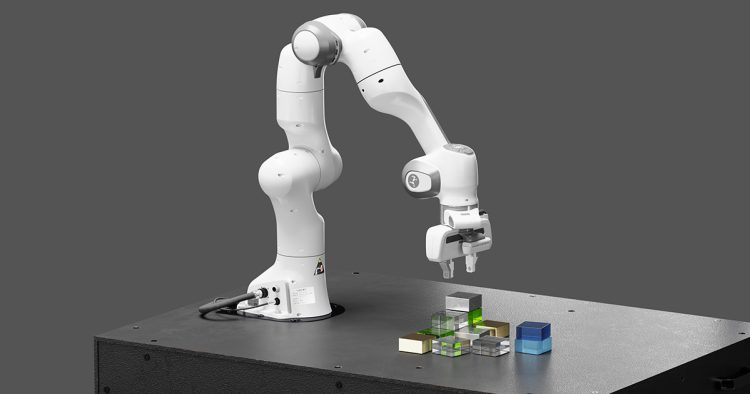1. Introduction
- Contextual Overview:
- Start with an introduction to robotics, emphasizing its role in diverse industries like manufacturing, healthcare, autonomous vehicles, and service robots. Highlight the importance of object recognition for robots to perform various tasks efficiently.
- The Challenge of Complex Environments:
- Discuss the challenge robots face in complex and dynamic environments, where the objects to be recognized can vary in shape, size, lighting, or be occluded by other objects.
- Purpose of the Research:
- State the article’s purpose: to explore how deep learning algorithms are advancing robot object recognition and improving robots’ ability to understand objects in such complex environments.
2. Deep Learning Algorithms in Robotics
- Understanding Deep Learning:
- Provide a brief introduction to deep learning, explaining neural networks, particularly Convolutional Neural Networks (CNNs), and how they are well-suited for tasks involving image recognition.
- Deep Learning Frameworks for Robotics:
- Discuss common deep learning architectures used in robotics, such as CNNs, Recurrent Neural Networks (RNNs), and Transformer-based models.
- Explain how these networks help robots process large amounts of visual data to detect, classify, and understand objects in real-time.
- Training Deep Learning Models:
- Explain the process of training deep learning models, including the importance of labeled datasets, data augmentation, and the use of transfer learning for faster adaptation to new tasks.
- Discuss the role of supervised, unsupervised, and reinforcement learning techniques in improving robot object recognition.
3. Challenges in Object Recognition in Complex Environments
- Variability of Objects:
- Discuss the challenges robots face in recognizing objects that have varying shapes, sizes, textures, and materials. Deep learning models need to generalize across these variations to be effective.
- Dynamic and Unstructured Environments:
- Describe the challenge posed by dynamic environments where objects might be moving, interacting, or partially obstructed. For example, in autonomous driving, where objects on the road are constantly changing.
- Lighting Conditions and Visual Noise:
- Explore how inconsistent lighting conditions, shadows, or noisy backgrounds complicate the task of object detection, and how deep learning can mitigate these issues through methods like image normalization, multi-modal inputs, and better feature extraction.
- Occlusion and Clutter:
- Discuss the difficulty robots face when objects are partially occluded or when the environment is cluttered. Address how deep learning models are being trained to handle these cases, using techniques like region proposal networks and attention mechanisms.
4. Advancements in Deep Learning for Improved Object Recognition
- Improved CNN Architectures:
- Discuss advanced CNN architectures such as ResNet, Inception, and VGG, which are helping robots recognize objects with greater accuracy. Highlight how these architectures have been tailored for robotic systems to improve their performance in complex environments.
- Multi-modal Sensor Integration:
- Explore the integration of different sensors like LiDAR, depth cameras, and infrared sensors with deep learning models to improve recognition in challenging environments. Discuss how these multi-modal systems provide complementary data, enhancing the robot’s ability to “see” and “understand” objects more effectively.
- Data Augmentation and Synthetic Data:
- Explain how synthetic data and data augmentation techniques, such as altering object positions, lighting conditions, and backgrounds, are used to train models that are more robust in real-world applications.
- Transfer Learning and Fine-tuning:
- Discuss how pre-trained models, especially from large datasets like ImageNet, can be fine-tuned on specific tasks to allow robots to perform object recognition with limited labeled data in complex environments.
- Real-time Object Recognition:
- Highlight the importance of real-time object recognition for robotic applications in dynamic environments. Discuss how advancements in hardware (such as GPUs and edge computing) and software optimizations (like model pruning or quantization) are enabling robots to process data and make decisions on the fly.

5. Applications of Deep Learning for Object Recognition in Complex Environments
- Autonomous Vehicles:
- Discuss how deep learning enables autonomous vehicles to recognize and understand objects like pedestrians, other vehicles, traffic signs, and road hazards, even in challenging environments like urban streets or inclement weather conditions.
- Robotic Surgery and Healthcare:
- Explore how robots in healthcare use deep learning for recognizing medical instruments, patients, and biological tissues in surgical settings, ensuring precision and safety in complex environments like operating rooms.
- Robotic Manipulation:
- Detail how robots in warehouses or factories use deep learning to identify and manipulate objects in cluttered environments, improving efficiency in tasks like sorting, assembly, and packaging.
- Robotic Assistants for Elderly or Disabled People:
- Explain how robots in home care environments use deep learning to recognize and interact with household objects (e.g., medications, food items, or mobility aids) to assist elderly or disabled individuals.
6. The Future of Deep Learning in Object Recognition for Robotics
- Continued Advancements in AI:
- Discuss the future directions in deep learning, particularly how upcoming breakthroughs in algorithms, like self-supervised learning, neural architecture search, and few-shot learning, could further enhance the object recognition capabilities of robots in dynamic environments.
- Ethical Considerations and Challenges:
- Touch on the ethical implications of robots becoming more autonomous and capable of understanding complex environments. Discuss the potential risks, privacy concerns, and challenges in ensuring transparency and accountability in AI systems.
- Human-Robot Collaboration:
- Look ahead to a future where robots can seamlessly collaborate with humans in shared environments, relying on advanced object recognition to perform tasks efficiently and safely. Discuss how deep learning is a key enabler of such collaboration, ensuring robots can understand human intentions and the objects involved in their tasks.
7. Conclusion
- Summary of Key Insights:
- Summarize the role of deep learning algorithms in improving robot object recognition, particularly in complex environments. Emphasize how these technologies enable robots to understand and interact with the world around them, improving their utility across various sectors.
- The Path Forward:
- Conclude by highlighting the importance of interdisciplinary research in robotics and AI, and how deep learning will continue to be a driving force in overcoming the challenges of object recognition and understanding in dynamic, real-world settings.











































